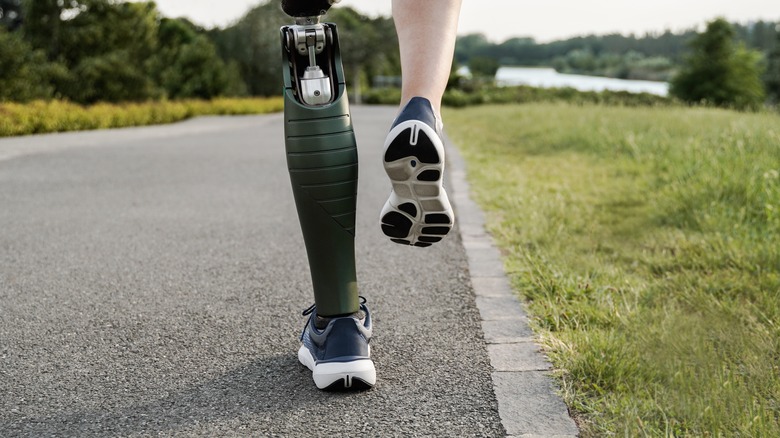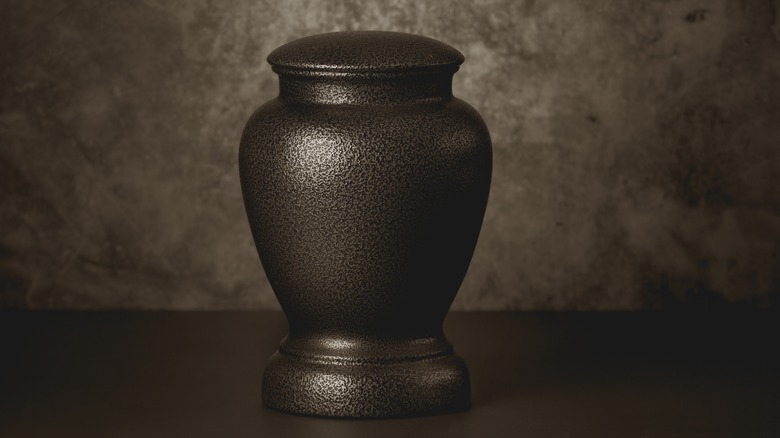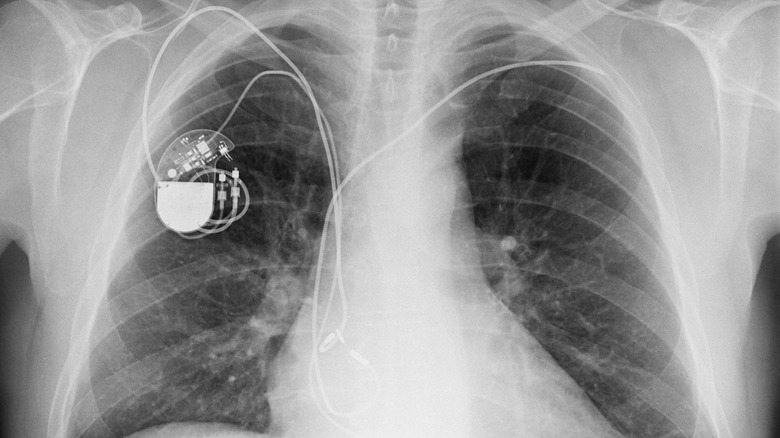This Is What They Do With Implants And Prosthetics Before Cremation
Implants and prosthetics have come a long way in modern medicine. From hip and breast implants to prosthetic arms and legs, people today lead their lives augmented with new or repaired body parts, and as a result, many with long lists of health challenges enjoy a better quality of life. As of 2022, in fact, 31,000 prostheses were sold each year, according to the Digital Resource Foundation for the Orthotics and Prosthetics Community (via Strategic Market Research).
But no matter how hard we try, one thing's for certain: Sooner or later, death comes for us all. So, what happens to all those replacement body parts when we're gone? With cremation now more popular than traditional burial, according to CNN, that issue is more relevant than ever. Do our cochlear implants just get melted down into lumps of plastic during cremation, and what about all that metal? According to BBC Future, the answer depends on the type of implant or prosthetic in question.
Before cremation happens, most prosthetic limbs, larger implants, or anything with a battery — like a pacemaker — get removed. Batteries might explode in the heat. Meanwhile, silicone — like in a breast implant — burns on its own. But what happens to most prosthetics and implants before and during cremation is just the beginning of the story. In a number of countries, some of these medical devices remain in service for individuals who are otherwise unable to afford their own.
Some metal gets recycled
According to the Canadian Broadcasting Corporation (CBC), with the permission of the deceased person's family, many crematoriums are collecting precious metals left behind in the cremation process to then get recycled. Among others, these metals include titanium, stainless steel, and sometimes gold. Much of that metal has resell value and businesses like Mount Pleasant Cemetery Group in Canada sell what they've gathered to companies like OrthoMetals in Denmark, who then resell the metal on their own.
Funeral homes and crematoriums most often donate the money earned through the reselling of metal collected from cremation ashes to charity. Speaking with the CBC, Mount Pleasant CEO Glenn McClary said, "You're taking something you were going to bury in the cemetery, it was going to no good. Now, the metals are not only going to be reused, we're going to have a few extra dollars that we can provide to charity and do some good work."
In 2019, the Australian Broadcasting Corporation (ABC) reported one crematorium in Perth, Australia collected 19 tons of metal with resell value with family's permission and sold it to recycling companies. Hundreds of thousands of dollars in proceeds were then donated to cancer patient advocacy and support services. On the types of metal recovered, Metropolitan Cemeteries Board CEO Peter Deague, whose company collects cremation-ash metal, told ABC, "It's a bit of a surprise sometimes when you look into the containers. It ranges from titanium to cobalt, to stainless steel and a bit of gold."
Certain prosthetics and implants get reused
As for prosthetics like arms and legs, which are removed before bodies are cremated, those, too, sometimes get reused, often in developing countries where parts of the population might not be otherwise able to afford one. As Amputee Coalition points out, it's illegal in the United States to reuse a prosthetic for health and safety reasons, but it is legal to disassemble the object into its component parts and then ship those parts to another country where they are reassembled and reused.
Prosthetics are attached to the outside of the body, so it makes sense they might still be usable by another person after the person who originally used them has died. As far as implants, though, placed inside a body, reuse is far more difficult and banned in places like the United States. But that, too, is also changing, as studies have shown that pacemakers in particular can be reused with little risk of infections or complications.
Per Science Daily, it's not allowed to reuse a pacemaker in the U.S., but like prosthetics, it is legal to package and send them to developing countries. Dr. Gaurav Kulkarni of Loyola University Medical Center, who co-authored a study on the safety of reused pacemakers told Science Daily, without donated pacemakers patients in places like India, people unable to afford pacemakers on their own, "would pretty much be forced to remain on confined rest, due to cardiac fatigue."


